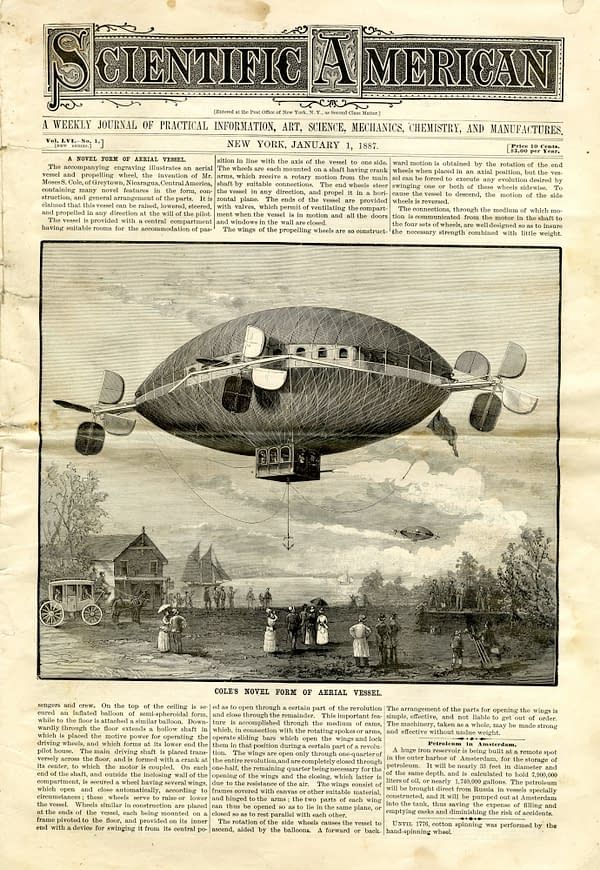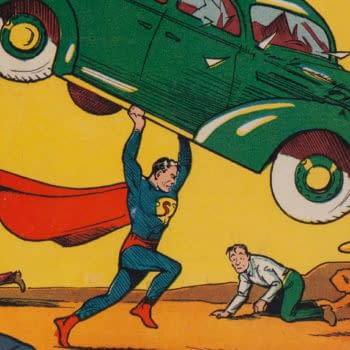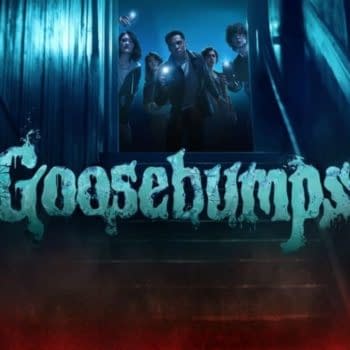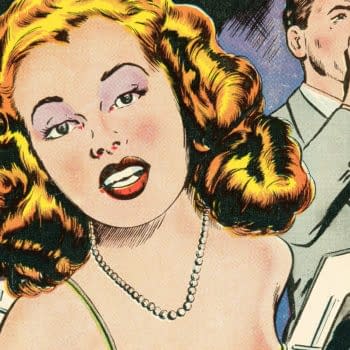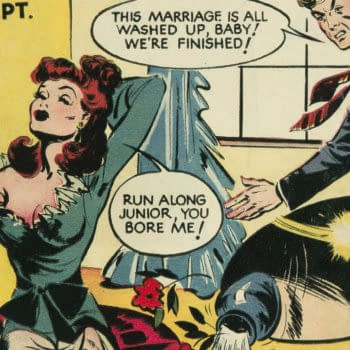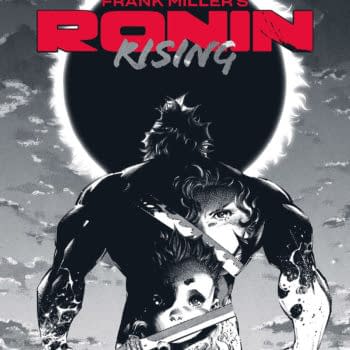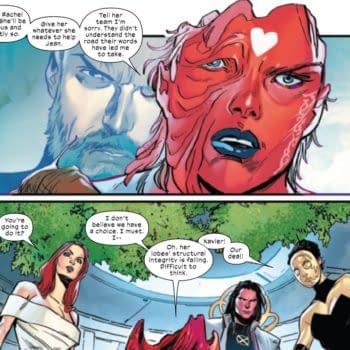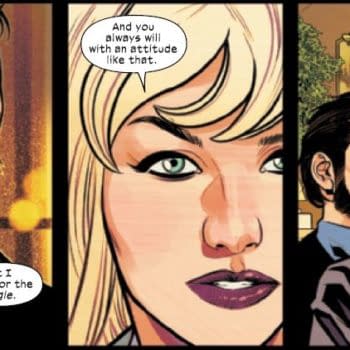Posted in: Comics, Vintage Paper | Tagged: the issue, ufo
THE ISSUE: Scientific American, A Novel Form of Aerial Vessel & UFOs
Inventor Moses S. Cole's "novel form of aerial vessel" made the cover of Scientific American in the Jan 1, 1887, issue.
Inventor Moses S. Cole's "novel form of aerial vessel" made the cover of Scientific American on the Jan 1, 1887, issue. While practically nothing is known about Cole outside of his connection to this invention, his aerial vessel has in recent decades become associated with the wave of UFO airship sightings in a number of locations in the U.S. 1896-1897. The Issue is a column about vintage comics and other vintage periodicals from throughout world history. The idea behind The Issue is simple: for each post, I'll choose something from my collection and talk about what's going on in it, and discuss the publishers and creators behind it. And essentially, I'm just going to end up stepping through illustrated periodical history one issue at a time. There is only one rule in The Issue: No recent stuff. Everything will be from before 1940, and most of it will be from before 1920.
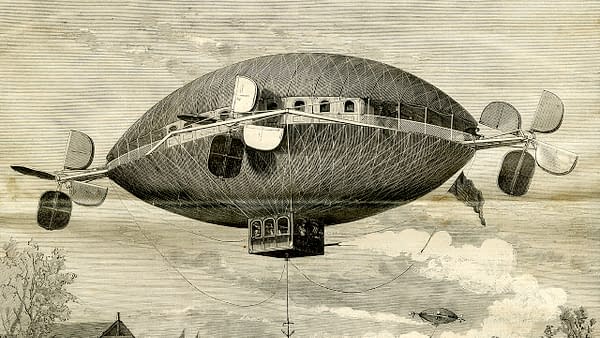
Mostly forgotten today, there were a large number of patents related to flying machines granted by the U.S. Patent Office before the Wright Brothers. These mostly centered around the usage of lighter-than-air gas combined with some attempted means of propulsion and navigation. Moses S. Cole filed two patents for his airship on March 1, 1886 — one for the aerial vessel itself and another for the "propelling wheel" that would be used to steer the ship through the air. These patents were both granted on November 9, 1896.
It's no random happenstance that an artist's depiction of Cole's patent in action was featured on the cover of Scientific American. as he filed his patent via that periodical's publisher. Scientific American's publisher, Munn & Co., was also a patent agent, and patents filed through Munn & Co. were often featured in the magazine. In addition to Cole's cover feature in 1887, other airship patents that the company helped file and then publicized in Scientific American during this era include Sumter Beauregard Battey's Aerial Machine in 1892 and Herman A. J. Rieckert's "improved airship" in 1889.
But Cole's aerial vessel has gotten attention in recent decades in connection to a wave of mysterious airship sighting reports that swept the U.S. in 1896-1897. Most specifically, the airship design illustrated for the front page of The San Francisco Call on November 19, 1896 highly resembles the Cole design as featured in Scientific American. That San Francisco Call story, "Strange Craft of the Sky" over Sacramento would be among the first of many such reports in locations across the country over the coming months. While many newspaper reports were obviously sensationalized, the raw number of patents being filed for airships during this period would seem to open up the possibility that some of these were inspired by actual airship experiments in some way. Charles F. Ritchel had publicly flown a small dirigible of his own invention in 1876, made the cover of the best-selling illustrated weekly in the country two years later, and more sophisticated designs by others quickly followed.
In newspapers across the country, some of the 1896-1897 sightings were declared hoaxes, while others became the subject of wild speculation, such as the April 1897 reports in Texas that led to speculation that the airships were the work of "possible soldiers from war-like Mars out on a terrestrial reconnoiter." It is of course worth noting that H.G. Wells' War of the Worlds had begun its U.S. serialization in Cosmpolitan with the April, 1897 issue, which appears to have hit the stands in late March and so would have been well-timed to inspire such concerns. Further, the highly-publicized tests of the Langley Aerodrome No. 5 in 1896 had helped prime public interest in flying machines.
As for Cole himself, the sum total of what we know about the man is contained in this Scientific American cover feature and his two patents. According to the patent info, he was a citizen of the United States, residing in the city of Rivas, Nicaragua. A little research turns up some possible candidates for the man during this era, but nothing that's close to conclusive, and it appears that his name never turned up in scientific circles again. UFO researchers began to notice the similarities between his design and the November 19, 1896 San Francisco Call depiction as early as the late 1980s. As to whether a later experimenter might have been inspired by his design or if perhaps more likely, the San Francisco Call's artist was merely inspired by a Scientific American cover he had on file, that remains a mystery.
